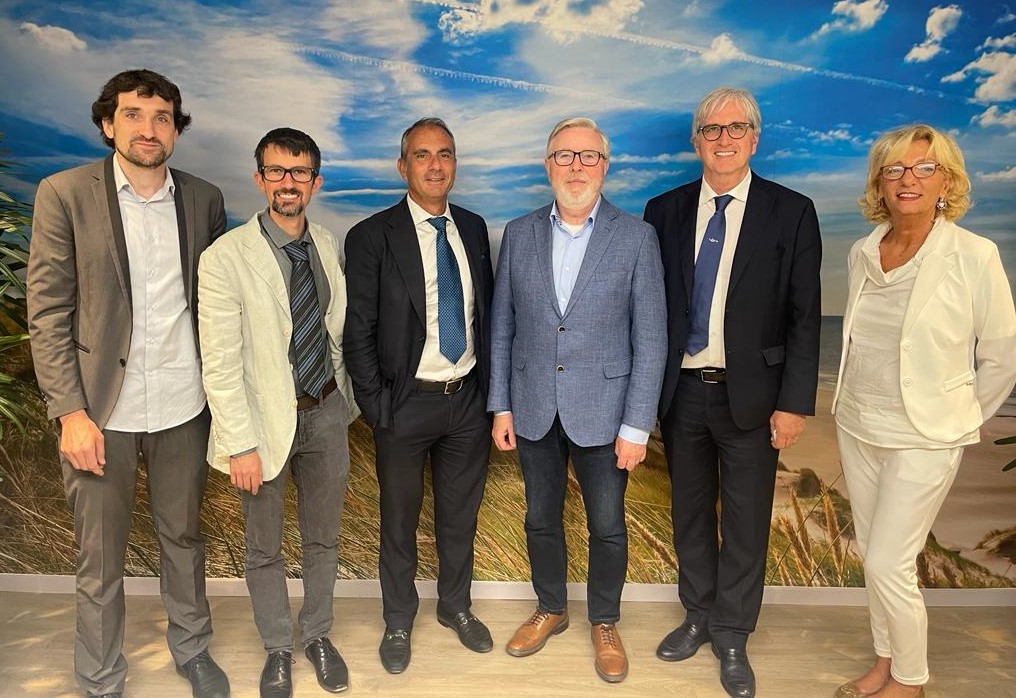At the 18th Scandinavian Mediterranean Corridor Forum in Brussels, Port Network Authority President Luciano Guerrieri had a bilateral meeting with European Corridor Coordinator, Pat Cox. He was joined by Deputy Commissioner for Darsena Europa, Roberta Macii, Administration senior executive Simone Gagliani, and financing specialist, Riccardo Di Meglio
The purpose of the meeting was to present the Port Network Authority’s current major projects and the impact of the planned investments on the Scandinavian-Mediterranean Corridor, which is the longest of the Trans-European Transport Network (TEN-T) corridors, extending from Finland to Malta. Of particular interest was the coordinated development of maritime and intermodal accessibility, with the dissemination of sustainable and digitalized solutions for the competitiveness of the logistics chains pertaining to the Network ports. This development is to be seen in the perspective of ever greater integration of the port network nodes, Livorno the Core port, Piombino the Comprehensive port and Guasticce freight village, also classified as a priority-Core, in the TEN-T nomenclature, with the nodes and road and rail connection axes of the European hinterland.
The delegation illustrated the important shipping accessibility programmes related to Livorno port’s Darsena Europa infrastructure and the new Darsena Nord in Piombino to Coordinator Pat Cox, who reports to the European Commission on the completion of investments on the TEN-T network in the Scandinavian-Mediterranean Corridor. The ongoing infrastructural upgrading of the Port Network Authority (PNA)’s two main ports will allow the trans-European transport network to continue to have a key gateway to growing markets outside Europe and in international value chains, particularly for those trades where the positioning of PNA’s ports is strongest.
No less important, however, will be the opportunity presented by investments in last-mile railway links in and near the ports, some of which are already under way, such as the Tyrrhenian railway line overpass. Some of these investments have been planned for the next few years to solve bottlenecks and congestion to increase the competitiveness of intermodal services with the hinterland. These investments are linked to the developments of the PC/80 gauge upgrading currently being completed by the Italian railway network on the Passante Appenninico, which will further open up the European hinterland market to the PNA’s ports.
The Port Network is ready to invest in the transversal areas of transport decarbonization and digitalization, in line with the ambitious European policy objectives in terms of sustainability and efficiency of logistics chains. Cold ironing, energy production from renewable sources and distribution of green hydrogen, financed by the National Complementary Plan and the National Recovery and Resilience Plan highlight the ongoing convergence to European standards in terms of emissions and environmental impact, towards the 2050 climate neutrality target set for the Union, also required in the implementation of the TEN-T Transport Corridors.
The European coordinator then discussed the funding opportunities on the Connecting Europe Facility – CEF programming, intended for transport infrastructure, and the resulting application profiles appropriate for the PNA. The European Coordinator’s attention was drawn to the considerable scale of the investment programmes and the related financing requirements. In this sense, the CEF funds represent, alongside the national, regional and Next Generation EU-PNRR resources which have already been assigned to the PNA a potential growth factor for the North Tyrrhenian ports and their integration into trans-European transport networks.
Translation by Giles Foster




